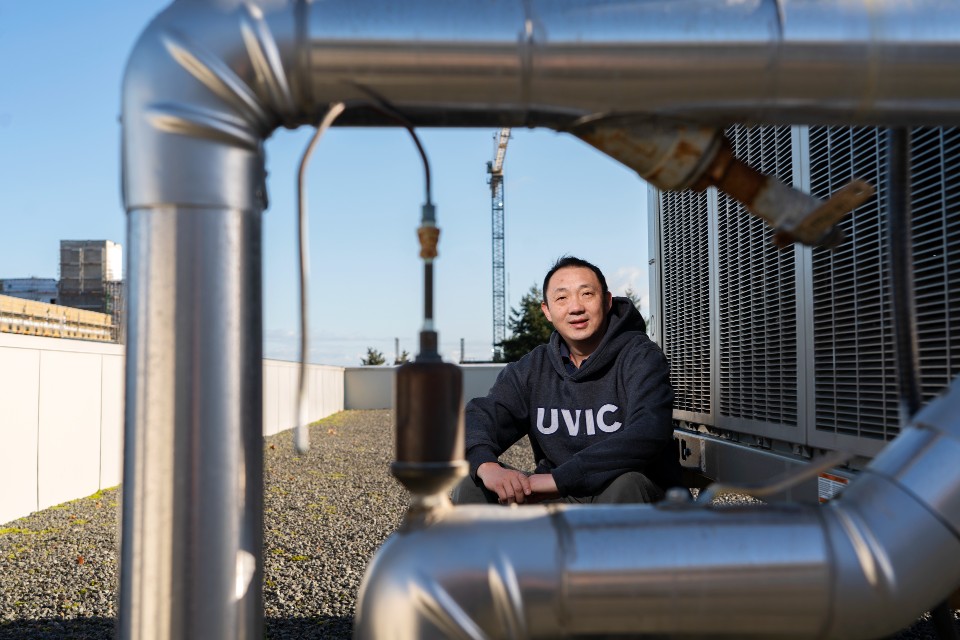
kontrol-technologies-is-in-the-thick-of-the-commercial-building-upgrade-supercycle-972005.html
The cumulative total addressable market of commercial building heating, ventilation and air conditioning equipment and controls replacement is expected to increase by $140 billion over the next 15 years to nearly $350 billion
Commercial buildings are set for an “upgrade supercycle” to improve energy efficiency, reduce emissions and advance building sustainability, which spells good news for Canadian technology firm Kontrol Technologies Corp (OTCQB:KNRLF, NEO:KNR).
Morgan Stanley (NYSE:MS) analysts, whp coined the term "upgrade supercycle" in 2021, are adamant that the market is underestimating the scale of the opportunity for companies operating in the building retrofit market, as sustainability efforts and supportive legislation fuel upgrades.
They estimate the cumulative total addressable market of commercial building heating, ventilation and air conditioning equipment and controls replacement will increase by $140 billion over the next 15 years to nearly $350 billion.
READ: Kontrol Technologies partners with trading company to bring its BioCloud technology to Japan
“We see commercial building modernization as one of the best points of convergence between sustainability and technology in our coverage universe with one of the largest installed bases in the world,” the Morgan Stanley (NYSE:MS) analysts said in a research note.
“Technology, awareness, an aging installed base, post-Covid changes, and funding mechanisms are coming together at what we believe are the early stages of a commercial building modernization supercycle in the US and Europe,” they added.
Commercial buildings account for nearly 40% of greenhouse gas emissions worldwide, according to some estimates, and North American buildings waste up to $60 billion in energy every year. There is impetus on both sides to reduce those numbers significantly by adopting smart technologies.
'Real demand for improvements'
A number of companies stand to benefit, from larger names like Carrier Global, Johnson Controls and Honeywell (NYSE:HON) to smaller outfits like Toronto’s Kontrol Technologies. Kontrol develops proprietary technology and solutions to help customers improve energy management, reduce greenhouse gas emissions, and create sustainable buildings.
“There is a real demand for improvements in how commercial buildings are operated and managed, which has driven a need for more technology and better operating systems,” Kontrol CEO Paul Ghezzi told Proactive in an interview. “On one hand, commercial and industrial real estate was hurt by the pandemic in terms of vacancy rates, but on the other hand, there is a big improvement cycle that’s coming.”
Kontrol offers real-time energy management of an entire building system through multi-year contracts. Going public in 2016, the group started with a portfolio of 10 buildings and quickly grew that number to over 400 buildings under management, a figure it is hoping to double in the near future.
The team is confident that it can reach its goal of 800 buildings under management. “We have delivered our highest revenue quarter and have a stable firm order book to support our continued growth,” Ghezzi said. “The question is how fast can we keep growing?”
Monitoring air quality with proprietary technology
One area where Kontrol is making a name for itself is with its unique air quality sensor technology known as BioCloud, an unobtrusive wall-mounted technology with a real-time analyzer designed to detect airborne viruses by sampling the air quality over time. The unit has a proprietary detection chamber that can be replaced as needed if and when viruses are detected. An alert system is created in the cloud or over local intranet.
“You need multiple tools and technologies to deal with pandemics,” Ghezzi said. “We’ve got vaccines, rapid tests and masks right now, but what’s becoming increasingly important is air quality. It’s the lane that we fit really well.”
Interest is starting to pay off in the form of revenue growth for the company. During its third quarter, Kontrol reported record revenue of $21.5 million - up 614% year-over-year - and record net income of $2.1 million for its second consecutive quarter of positive net income.
The firm’s performance comes at a time when funding is at an all-time high in the commercial building retrofit industry. In the first half of 2021, more than $5.1 billion was poured into the space. Over 30% of this money went to property technology which addresses the management and operations of commercial and industrial buildings.
Market research group Memoori reported 58 acquisitions in the smart buildings sector in the first quarter of 2021 alone, noting the trend of acquiring Internet of Things (IoT) technologies that improve building performance.
All of this could position Kontrol as an attractive takeover target, especially once it accomplishes its 2022 goal of uplisting to a major US exchange.
“We continue to expand opportunities within our existing customer base while working diligently to scale into additional markets with new customers,” Ghezzi told shareholders recently. “Our core focus on sustainability, energy conservation, and greenhouse gas emission reduction are key drivers of our operating platform’s expansion.”
https://www.civilengineering.ai/kontrol-technologies-is-in-the-thick-of-the-commercial-building-upgrade-supercycle-2/


 FedEx launches AI-powered sorting robot to drive smart logistics - Parcel and Postal Technology InternationalFedEx launches AI-powered sorting robot to drive smart logistics - read more about this with Parcel and Postal Technology International
FedEx launches AI-powered sorting robot to drive smart logistics - Parcel and Postal Technology InternationalFedEx launches AI-powered sorting robot to drive smart logistics - read more about this with Parcel and Postal Technology International DC joins growing list of cities requiring new buildings to include EV parkingA make-ready rule requires 20% of parking to be ready for EV charging in certain new and refurbished buildings. But a parking reform expert said the rules ignore a bigger climate question: Is new parking necessary at all?
DC joins growing list of cities requiring new buildings to include EV parkingA make-ready rule requires 20% of parking to be ready for EV charging in certain new and refurbished buildings. But a parking reform expert said the rules ignore a bigger climate question: Is new parking necessary at all? Using data’s ‘invisible’ influence to build smart wastewater networks - Utility WeekIsle Utilities’ Chris Thomas outlines the roles of technology and data in building successful wastewater asset management strategies and the creation of ‘smart’ networks.
Using data’s ‘invisible’ influence to build smart wastewater networks - Utility WeekIsle Utilities’ Chris Thomas outlines the roles of technology and data in building successful wastewater asset management strategies and the creation of ‘smart’ networks. AI and climate - University of VictoriaHumans are going to need the help of machines in fighting climate crisis.
AI and climate - University of VictoriaHumans are going to need the help of machines in fighting climate crisis. Smart Keypads: A Must for Home AutomationSmart Keypads are the must have for home automation. Our new line of wireless smart keypads can control any appliance or device in your home. Choose the best home automation system in India based on your needs.
Smart Keypads: A Must for Home AutomationSmart Keypads are the must have for home automation. Our new line of wireless smart keypads can control any appliance or device in your home. Choose the best home automation system in India based on your needs.
 Getting climate smart | Dialogue | thenews.com.pkOn climate smart low-income housing in Pakistan
Getting climate smart | Dialogue | thenews.com.pkOn climate smart low-income housing in Pakistan New smart-roof coating keeps homes warm in winter and cool in summerBreakthrough regulates household temperature without consuming natural gas or electricity.
New smart-roof coating keeps homes warm in winter and cool in summerBreakthrough regulates household temperature without consuming natural gas or electricity. The Sustainability Series: How to identify and buy smart, responsible materialsRepresentatives from By Malene Birger, Ganni and Henrik Vibskov discuss why working with smart materials is key for a greener future
The Sustainability Series: How to identify and buy smart, responsible materialsRepresentatives from By Malene Birger, Ganni and Henrik Vibskov discuss why working with smart materials is key for a greener future